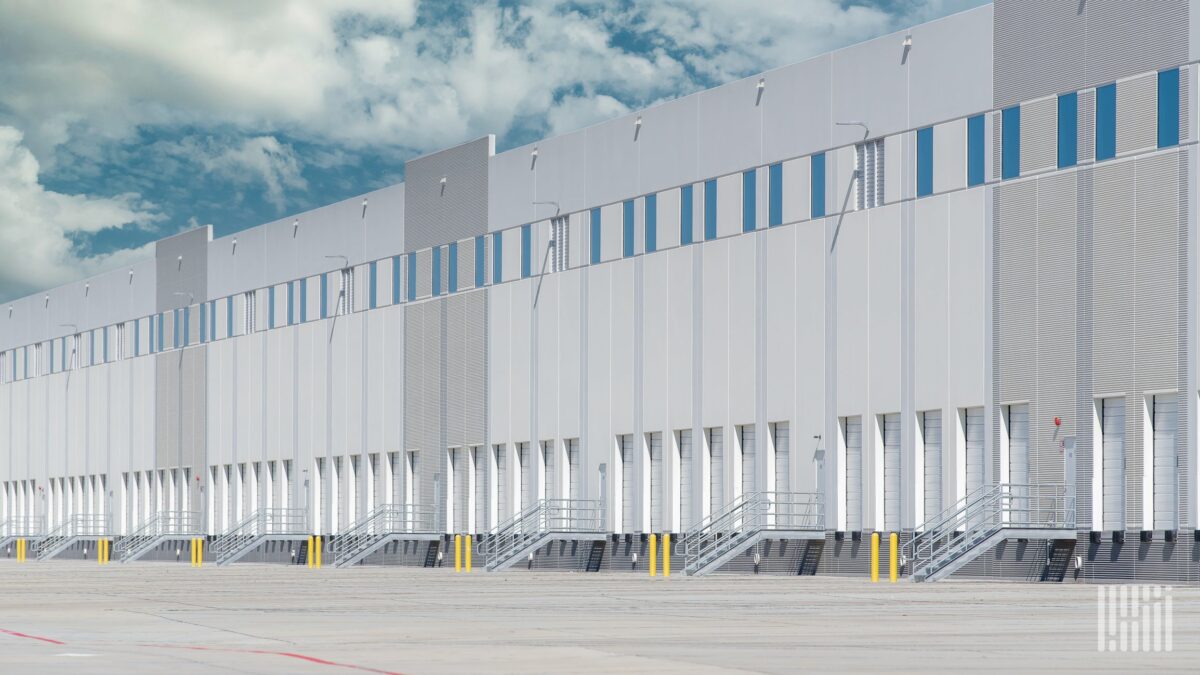A rule regulating emissions at Southern California warehouses, which the state’s trucking industry viewed as akin to a zero-emission vehicle (ZEV) mandate, has been upheld by a federal district court.
In a ruling earlier this month, Judge John Kronstadt of the Central District of California rejected claims in a lawsuit filed by the California Trucking Association (CTA) that a warehouse emissions rule approved in May 2021 by the South Coast Air Quality Management District (SCAQMD) was preempted by the Federal Aviation Administration Authorization Act (F4A). The law has been a key point of argument in several legal cases involving the transportation industry on one side and the state of California the other, including litigation surrounding independent contractor law AB5.
The CTA was later joined as a plaintiff by airline trade group Airlines for America (A4A). Its arguments were similar to those of CTA, though it cited the Airline Deregulation Act (ADA) as having set federal law that it believes preempted certain state actions. Its interest in the case is that airline cargo operations into Southern California make heavy use of the network of warehouses served by the area’s busy ports and airports.
In their lawsuit, both plaintiffs said they believed the warehouse emission requirements would require changes in operations, primarily through the purchase of ZEVs or near-zero-emission vehicles (NZEV) that could impact “prices, routes or services,” the three-headed standard in both F4A and ADA that the respective federal laws say state action can not impact.
“CTA and A4A argue that the rule is preempted because it is related to the control of emissions from vehicles and engines … and its purpose and effect is to mandate the purchase of ZE and (near) ZE trucks,” Kronstadt said, summing up the plaintiffs’ key argument.
But the CTA and A4A pleadings were rejected, along with the CTA and A4A requests for summary judgment in the suit.
The warehouse rule sets standards for emissions at the facilities and then awards points for steps taken to reach those goals. There are points awarded for such things as using ZEVs within the facility and its grounds, being visited by ZEVs making deliveries or picking up cargo, or putting solar panels on the roof. There also is an option to buy points that can be used to meet the individual warehouse mandate. There is no ZEV mandate in the rule.
Each warehouse has a WAIRE Points Compliance Obligation (WPCO) under the program. WAIRE stands for Warehouse Actions and Investments to Reduce Emissions.
In his decision, Kronstadt said there had been indications of warehouses increasing ZEV use as a result of the warehouse rule by companies seeking to meet their WPCO target. “But many did not,” he wrote. The judge’s decision ticks off a long statistical summary of, among other things, how many warehouses earned WPCO points using ZEVs, how many earned points by being visited by ZEV vehicles and how many hit their WPCO target all or in part by purchasing points.
There is little doubt that the rule does appear to have incentivized the purchase of ZEV or NZEV trucks. Kronstadt, citing state data, said preliminary reports suggest that more than 87% of the WPCO points earned by warehouses in the early months of the program came from the use of ZEV or NZEV vehicles. “But a meaningful minority of approximately 13% of the total points earned were earned by taking other actions,” Kronstadt wrote.
In a commentary on the decision, the law firm of Latham & Watkins noted that the court’s decision was that the WAIRE rule was not preempted by F4A or A4A because “it relates to a facility by facility review of indirect sources of emissions.”
“The court reasoned that if the District sought to regulate truck emissions, (it) would make the WPCO dependent on the number of miles traveled by the trucks visiting the warehouse.” But the emissions score given to an individual warehouse is dependent in part on the number of visits to a warehouse, not the miles traveled by the truck to get there. A truck making a visit to a warehouse from a port or airport a mile away is viewed under WAIRE as the same data point for compliance purposes as a truck coming from 50 miles away, even though the emissions related to the two trips are significantly different.
Ultimately, the law firm wrote, “the court recognized that trucking operations are integral to an air carrier’s integrated delivery system, but held that the (SCAQMD rule) is not preempted by F4A or ADA because it has only an indirect connection to motor carrier prices, services and routes.”
More articles by John Kingston
California holds off on only allowing new zero-emission vehicles in drayage registry
Registration deadline for California Clean Truck Check gets another month
Challenge to California’s Advanced Clean Trucks EPA waiver on hold











Michael Middleton
Nevada, north of Vegas, is building warehouses in large numbers. Perhaps they know something. Seems a further might be to create Stateline drop lots to transfer the trailers to an ev tractors to complete the haul into California. Crazy I know.
bob whitlinger
This report states Southern California. Does the rule include the rest of the state of California?
Mark P Predovic
Are they appealing this decision?
David A bell
It’s time to shut down all truck and all traffic then let them try and order everyone back to work then give them the flying eagle.
John Mazzarella
If California wants these laws let them have them. The truckers and cago planes should just stop serving the state. Just operate in other states and help them out.
Paul stevens
California will regulate its self to the point NO carriers will be deliver to that state.